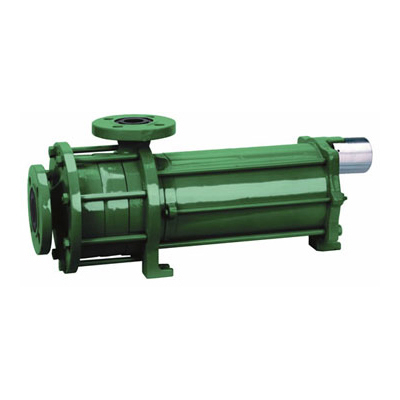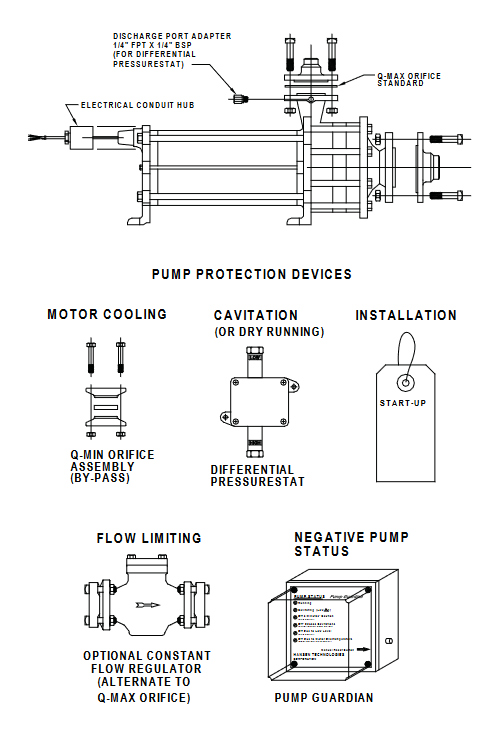
Superior. Sealless. Smooth.
Pumps come complete and pretested.
Superior for refrigeration
systems because they are sealless.

A stable vessel pressure must be maintained to avoid the spontaneous vaporization (boiling) of liquid refrigerant inside the pump accumulator and associated piping. The system designer must ensure that compressor loading, loading sequences, and defrosting cycles do not change vessel pressures too rapidly. As a general rule, vessel pressure changes downward should be limited to 1 psi per minute to maintain bubble-free liquid flow to pump.
For pump servicing, a valved pump-out line from the bottom of the pump suction line, near the pump, should be installed for the purpose of quickly evacuating liquid refrigerant and system oil. This should be in addition to properly sized, low pressure drop service/ isolation valves in pump suction and discharge lines.
Pumps should be properly mounted to eliminate vibration damage and thermodynamic strains as the pump and piping are cooled to operating temperature. All pipe work should be flushed to clean out welding slag and other foreign matter before operating the pump. Unless the system is proven to be quite clean, a system filter should be installed in the pump discharge line to remove silt, rust and particles which otherwise would continue to recirculate throughout the system. This can improve overall system life by minimizing wear to other components and bearings.

CONTACT US Copyright © 2016-2024 Hansen Technologies Website by Solve Your Marketing & i6 Graphics